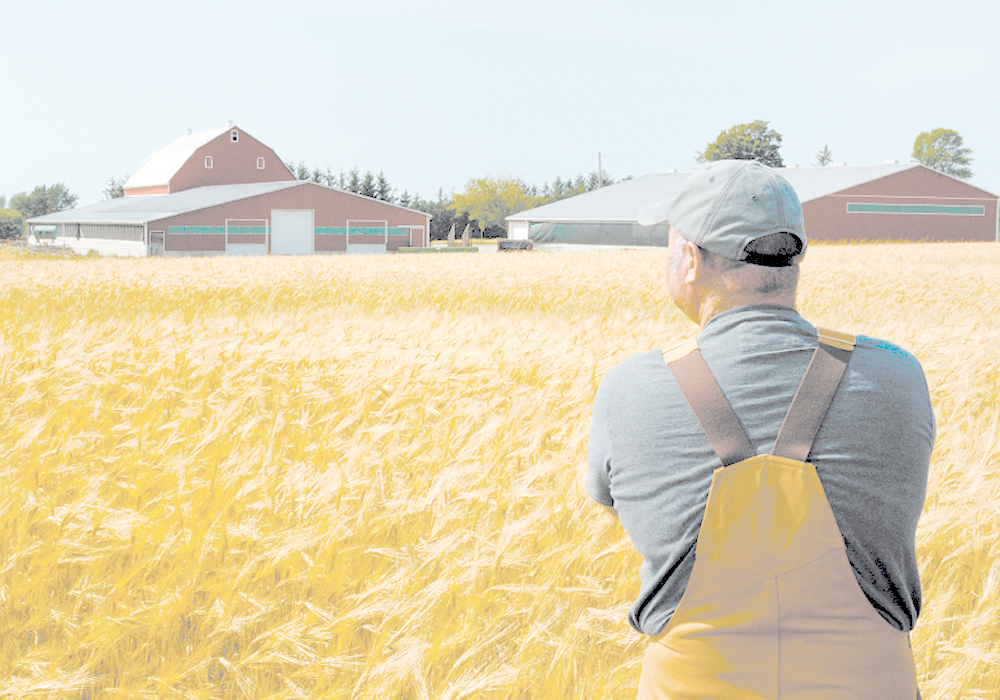A while back, I wrote an article on bare trusts and the changes to tax filing obligations for them. By way of reminder, a bare trust is a trust relationship characterized by the following hallmarks:
- The trustee holds legal title to property and has no other powers, duties or responsibilities in relation to the trust property.
- The settlor is the sole beneficiary of the bare trust and retains the right to control and direct the trustee in all matters relating to the trust property.
Read Also

Kochia has become a significant problem for Prairie farmers
As you travel through southern Saskatchewan and Alberta, particularly in areas challenged by dry growing conditions, the magnitude of the kochia problem is easy to see.
Bare trusts are common in everyday life. For example, they include the following fairly typical arrangements:
- Estate planning with aging parents, in which an adult child may be added to title for real property such as the family home or farmland or bank/investment accounts owned by the aging parent in an effort to avoid probate and simplify the estate administration. In implementing this arrangement, the aging parent typically remains the sole beneficial owner of their assets and the adult child is only added to legal or registered title.
- Child “in trust for” accounts, in which a parent has an “in trust for” account for a child and the property in the account is considered the child’s property, such as an account to hold a child’s birthday money.
- Co-signor on a mortgage, in which the beneficial owner cannot obtain financing so another person, such as a parent or grandparent, goes on title with the beneficial owner and co-signs the mortgage.
The above reflects just a small sub-set of arrangements that may constitute a bare trust.
Historically, bare trusts have been ignored for income tax purposes and their existence was not generally reported to the Canada Revenue Agency.
In 2018, the federal government signalled upcoming changes to the Income Tax Act to expand the trust reporting regime for all “express trusts” unless specifically excepted.
In 2022, the federal government signalled that bare trusts would also be looped into and subject to the new trust reporting rules starting with the 2023 calendar year. This was presumably to sniff out criminal activities such as money laundering or terrorist financing, although whether a criminal will complete their T3 bare trust filing is a whole other story.
Since 2022, tax professionals across Canada have been simultaneously:
- Trying to reason with and/or scold the federal government that these new bare trust rules are so overly broad that they are capturing a vast number of common bare trust arrangements for many Canadians, with it being entirely unclear why the government cares to be informed of these fairly mundane bare trust arrangements.
- Scrambling to notify clients of these new tax rules and determining which clients have bare trust arrangements in order to help get them into compliance with the new bare trust filing obligations. The first bare trust filing was due at he end of March 2024, although it was extended to April 2 due to the timing of Easter weekend. Missing the filing deadline would have meant many Canadians could face steep penalties, although the CRA had somewhat previously walked back on the penalties.
On March 28, heading into the Easter long weekend and really at the last possible moment before the filing deadline, the federal government did a complete about face on the bare trust filing rules, with the CRA publishing that, “in recognition that the new reporting requirements for bare trusts have had an unintended impact on Canadians, the Canada Revenue Agency will not require bare trusts to file a T3 … for the 2023 tax year, unless the CRA makes a direct request for these filings. Over the coming months, the CRA will work with the Department of Finance to further clarify its guidance on this filing requirement.”
“Unintended impact on Canadians?” Is the government seriously suggesting it did not understand the impact of these rules when tax professionals have been shouting about it since 2022? Did the government not bother to consider all the common arrangements that constitute a bare trust when they introduced these over-reaching rules?
As for the last-minute timing of this announcement, many Canadians have already paid hundreds of dollars (if not thousands) for their accountants to file the bare trust tax return in advance of the filing deadline. In other words, our government put many Canadians out of pocket for something that was a “whoops, my bad” on the its part. Is anyone in government going to be held accountable for this?
Similarly, many tax professionals have spent hours researching the new rules, educating clients on these new rules and helping clients with the T3 filing — all for nothing. Is anyone in government going to be held accountable for this?
Where do things stand for 2024 and beyond? Your guess is as good as mine.
In light of the complete disaster the government created in the first instance with these bare trust rules, I do not place much confidence in it to fix its mess in a way that makes practical sense for Canadians. In the meantime, stay tuned.
Jessi Brockman is a lawyer with Stevenson Hood Thornton Beaubier LLP in Saskatoon. He can be contacted at jbrockman@shtb-law.com. This article is provided for general informational purposes only and does not constitute legal or other professional advice.















